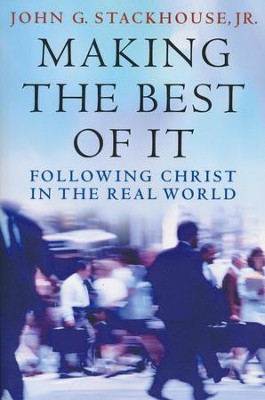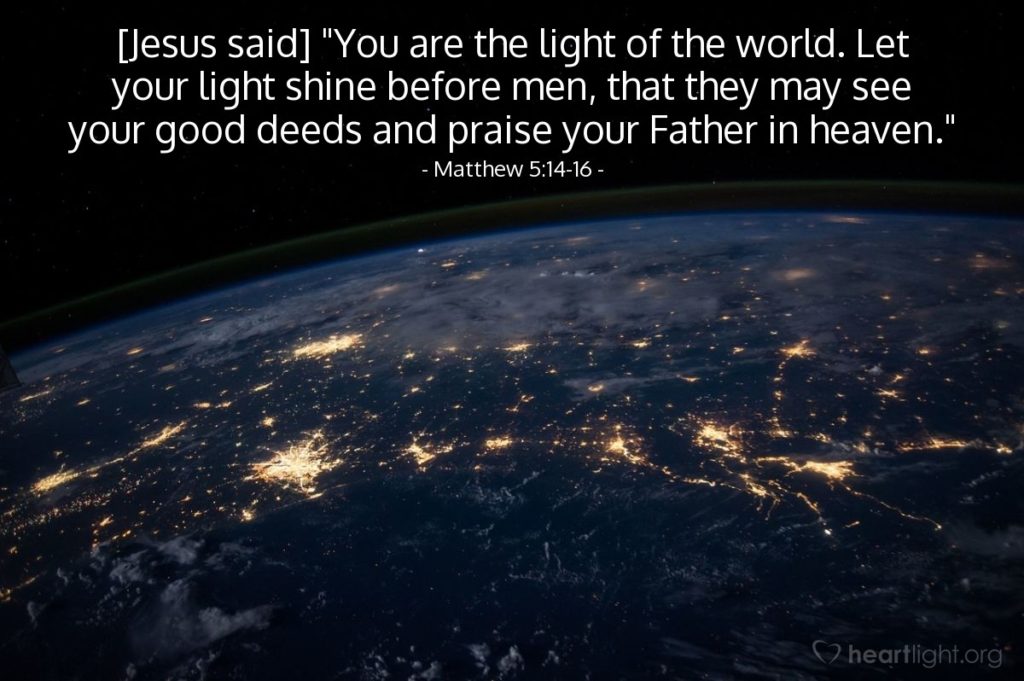Also posted on the EFCC blog.
Sometimes, firm believers quarrel with each other. Sometimes, faithful attenders migrate to other churches. And we wonder – why do God’s people, who are called to unity, divide?
The Scriptures are full of beautiful metaphors which illustrate our collective identity as God’s people – to name a few, we’re called a family, a body, and a temple. And these images also clarify how we relate to God, as believers – we are children of One Father, servants of Christ, and a dwelling place for the Spirit (see Gal 3:26, 1 Co 12:27, Eph 2:22, plus more).
Certainly, it is essential for us to know who we are and how we relate to God – and knowing these Biblical images can build good common ground between believers. But there is a whole other issue that can trip us up and divide well-meaning believers. It’s an issue that requires another set of Biblical metaphors to clarify it: How are Christians called to relate to their surrounding culture?
Why can we be focused on worship, fellowship, and discipleship one minute, and get sidetracked by politics the next minute? Why do peripheral issues hijack our conversations?
Why can sincere Christians disagree so sharply about where to send their kids to school, how to vote, or what the church’s local and global missions should look like?
I’ve become convinced that our differences really boil down to the way we answer two questions:
- Is our stance toward culture optimistic or pessimistic?
- Is our posture toward culture active or passive?
An optimistic stance typically results in a person engaging with the culture around them, while a pessimisticstance results in their withdrawal or separation.
Those with an active posture would likely seek to change their culture, while those with a passive posture look for a way to coexist.

Now, one might ask for a definition of culture, but I’ll leave that to other authors like John Stackhouse, David Fitch, and Andy Crouch, who offer some great insights on this topic. And we could talk about the Kingdom of God – what does Jesus mean when He says the kingdom is like wheat mixed with weeds? (Matthew 13:24-30, 36-43).
But for now, if we focus on asking these two questions, our results will produce a chart that I’ve found helpful for understanding others:
| Passive (Coexist) | Active (Change) | |
| Negative (Withdrawn) | ||
| Positive (Engaged) |
And so, these four quadrants represent four different lifestyles, or ways that Christians relate to the culture around them. As the chart below shows, each one expresses different felt needs, values, and virtues that Christians hold:
| Passive (Coexist) | Active (Change) | |
| Negative (Withdrawn) | Subculture Flight, Refuge Holiness & Purity Preserving | Counter-culture Fight, Confront Justice & Power Replacing |
| Positive (Engaged) | Cultural Contribution Reconcile, Bridge Compassion & Peace Cooperating | Culture creation Renew, Create Truth & Love Transforming |
Perhaps you can imagine what each of these lifestyles would look like, lived out in reality. Perhaps it can help parents understand why one would homeschool and the other would teach in the public system. Perhaps it can help people understand where the other side (politically) is coming from. Or why some Christians have founded monasteries, while others started wars; why some built hospitals, and others translated the Bible. Here are some examples from Scripture, Jewish culture, Christian history, and contemporary situations:
| Passive (Coexist) | Active (Change) | |
| Negative (Withdrawn) | Patriarchs Essenes Monasteries Retreat Center Homeschool | Prophets Zealots Protestants Political Action Private School |
| Positive (Engaged) | Priests Sadducees Universities Hospitals, Daycares Public School | Kings Pharisees Missionaries Bible Translation Student ministry |
Now, I hope that a chart like this can help people understand the value of each other’s view. As Ecclesiastes 3:1 says, “there is a time for everything.” Throughout the Biblical narrative, Christian history and our daily lives, there is a time for God’s people to take refuge, and a time for prophetic confrontation. There is a time for building bridges, and a time to blaze missional trails. All of these cultural responses reflect Christian values in different times and ways.
Yet, I will admit that I do hold one quadrant to be ideal. In light of our call to be Christ’s Ambassadors (2 Corinthians 5:14-21), to be “in this world but not of it,” (John 17:15-18) and to “live good lives among the pagans,” (1 Peter 2:11-12), I prayerfully hope for opportunities to be actively engaged with the culture around me. And, to end with one final metaphor, from Jesus:

Much more could be said on this topic, especially from its foundations in the Old Testament. From the moment of creation, humans were given dominion over the earth to care for it (Genesis 1:26-28), and no matter where they found themselves, God’s people were always called to be a blessing and light to others (Genesis 12:1-3, Exodus 19:4-6, Isaiah 49:6).
And that’s the metaphor we can take with us anywhere. As we live in this world and relate to our culture in various ways, we can always ask ourselves,
How am I called and equipped to be light here?
